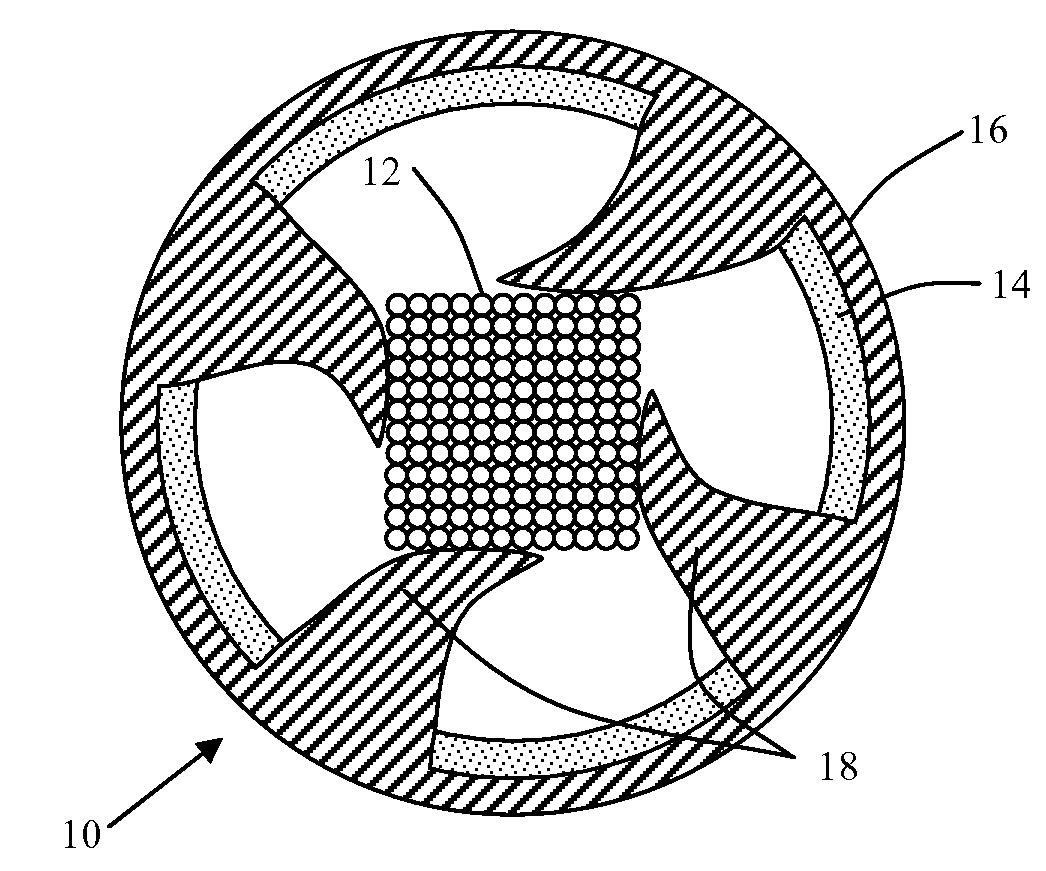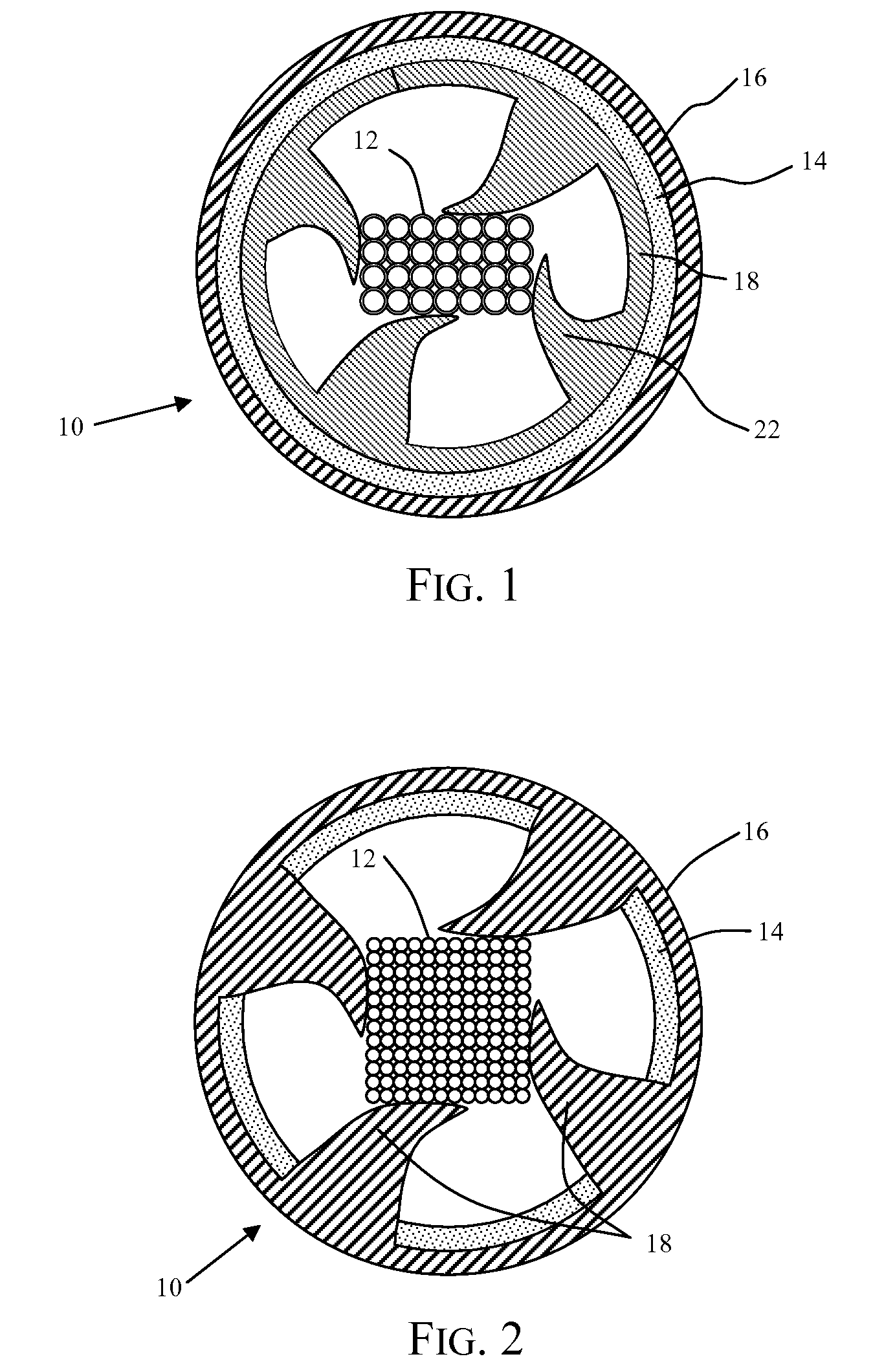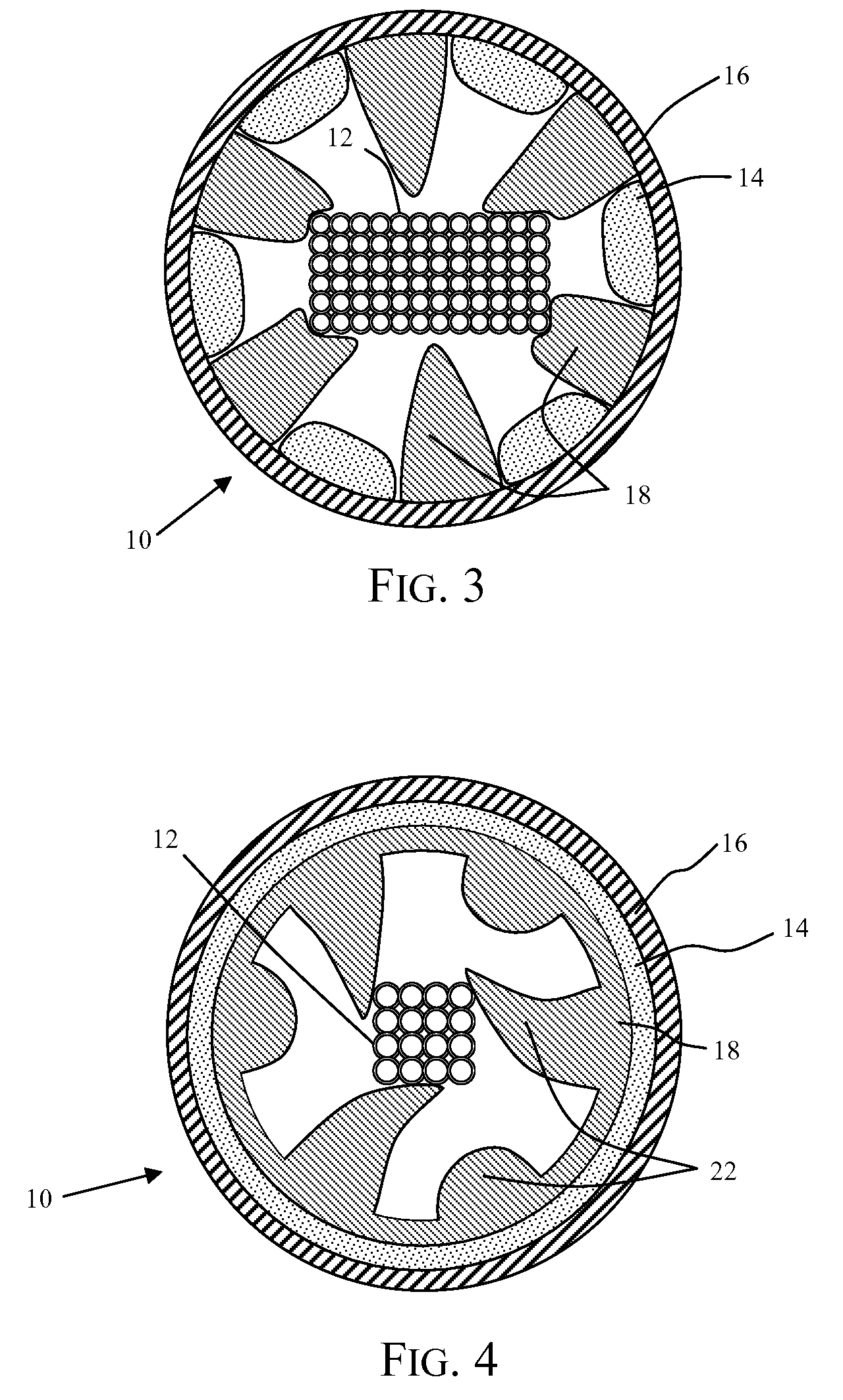Optical fiber cable having raised coupling supports
a technology of optical fiber cable and coupling support, which is applied in the field of optical fiber cable, can solve the problems of optical fiber force development, signal attenuation or signal loss, microbending and macrobending effects, etc., and achieve the effect of reducing cable costs and limiting the amount of compressive conta
- Summary
- Abstract
- Description
- Claims
- Application Information
AI Technical Summary
Benefits of technology
Problems solved by technology
Method used
Image
Examples
Embodiment Construction
[0026]The present invention is described herein with reference to the accompanying drawings. As will be appreciated by those having ordinary skill in the art, these drawings are schematic representations, which are not necessarily drawn to scale. This invention may be embodied in many different forms and should not be construed as limited to the embodiments set forth herein. The embodiments disclosed are provided to convey the scope of the invention to those having skill in the relevant art.
[0027]In one aspect, the invention embraces an optical fiber cable that provides satisfactory coupling of optical fibers and a surrounding buffer tube but in a way that reduces unwanted microbending and macrobending effects. In another aspect, the invention embraces methods of making such optical fiber cables.
[0028]FIG. 1 depicts a cross-sectional view of one embodiment of an optical fiber cable 10 according to the present invention. In this exemplary embodiment, an optical fiber element 12 is di...
PUM
| Property | Measurement | Unit |
|---|---|---|
| tensile strength | aaaaa | aaaaa |
| elongation to break | aaaaa | aaaaa |
| elongation to break | aaaaa | aaaaa |
Abstract
Description
Claims
Application Information
 Login to View More
Login to View More - R&D
- Intellectual Property
- Life Sciences
- Materials
- Tech Scout
- Unparalleled Data Quality
- Higher Quality Content
- 60% Fewer Hallucinations
Browse by: Latest US Patents, China's latest patents, Technical Efficacy Thesaurus, Application Domain, Technology Topic, Popular Technical Reports.
© 2025 PatSnap. All rights reserved.Legal|Privacy policy|Modern Slavery Act Transparency Statement|Sitemap|About US| Contact US: help@patsnap.com



